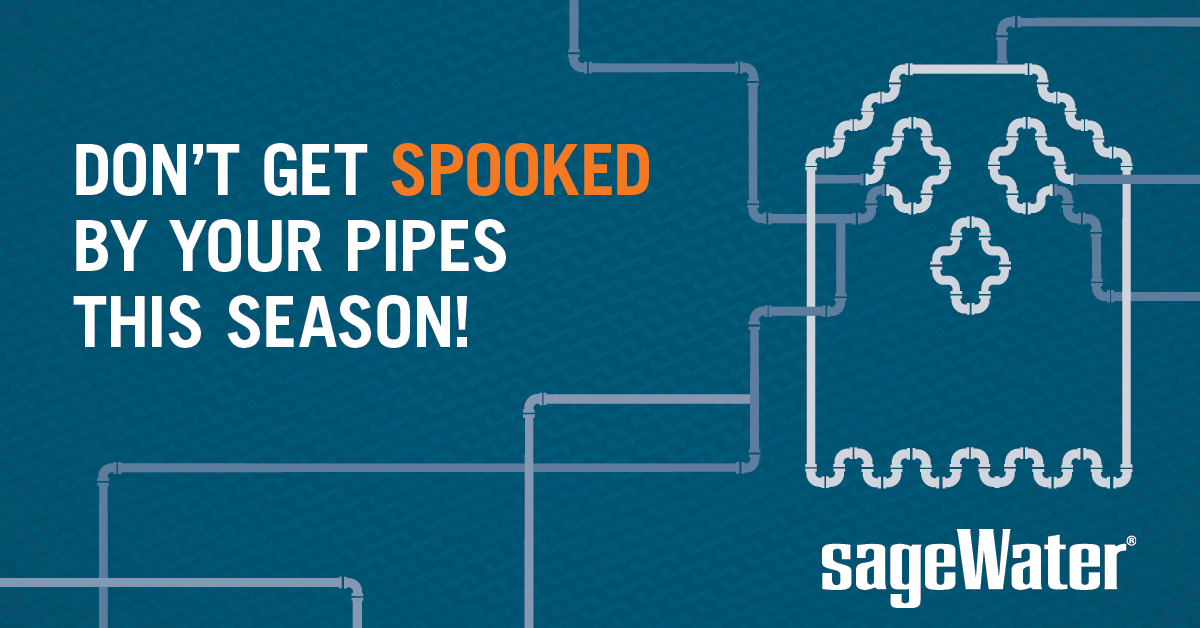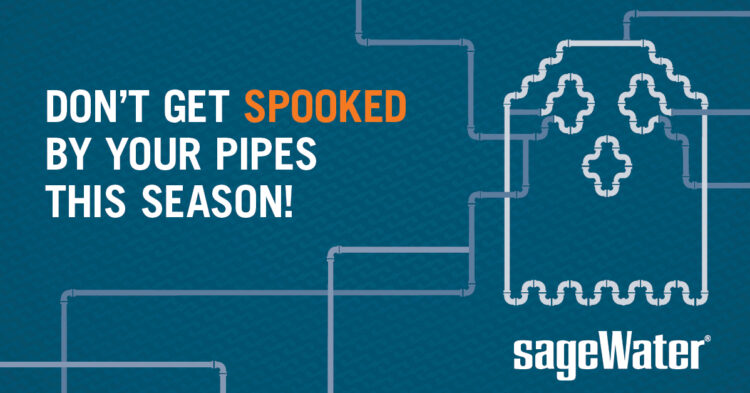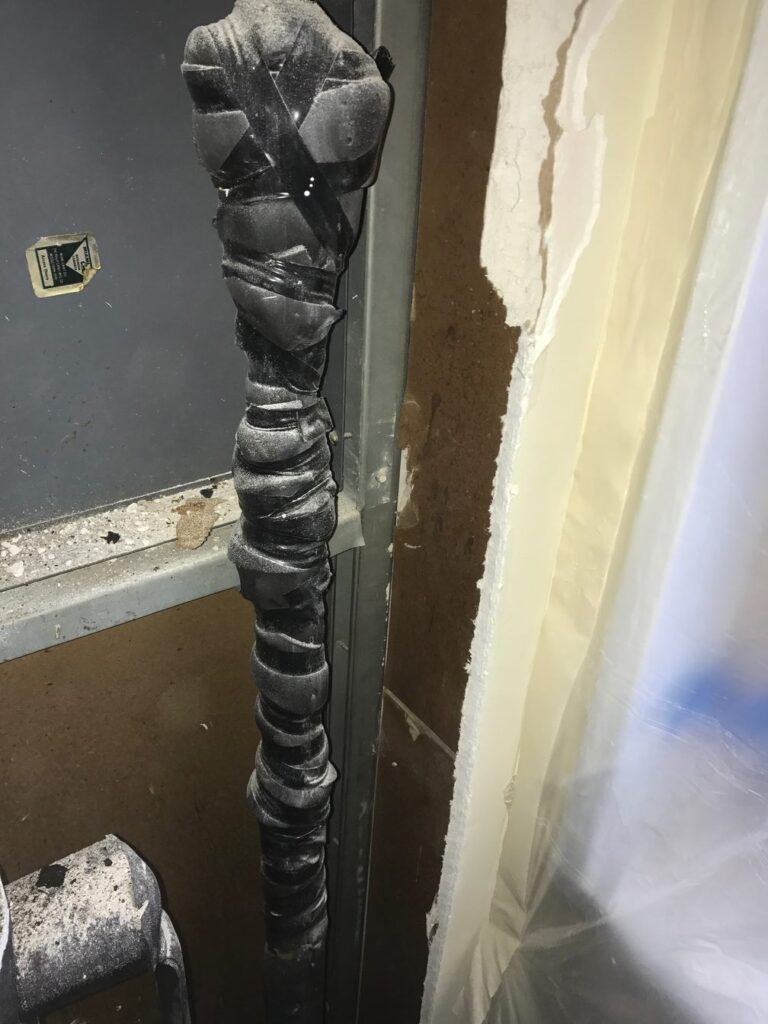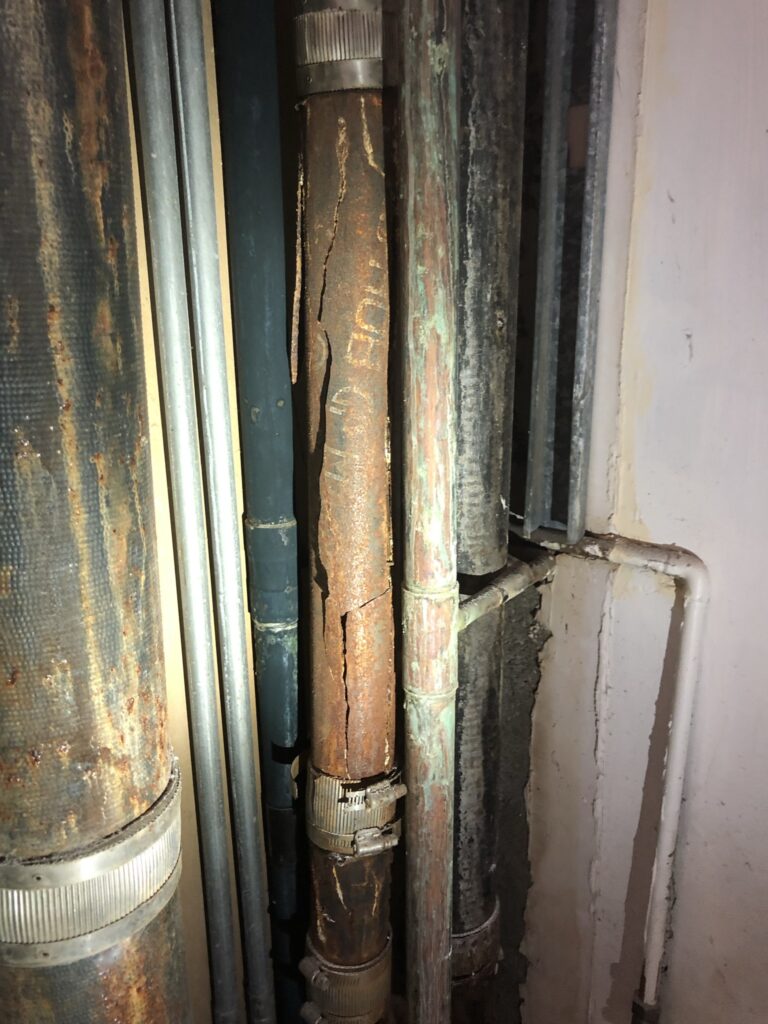
Picture it: An older building, nightfall. A foul smell wafts from an unknown source in the hallways. In the stairwells, residents see pipe stacks seeping. Last month, motley-colored spots crept across the lobby walls. This month, several ceilings in the south corner are starting to sag and the heat is out. Tension is rising across the community.
This isn’t a Halloween nightmare. It’s the reality facing many aging condominium buildings whose pipes are reaching the end of their useful life. At first, the leaks and smells are an occasional nuisance, but over time the frequency and intensity of failures increase.
Even with the tell-tale signs of pipe failures mounting, you may be tempted to put off the inevitable pipe replacement that your community needs. Maybe you don’t have adequate budget or reserves, which means homeowners will question every penny of funding required. Also, you may not feel confident about managing a significant construction project while easing residents through several months of disruption to their lives.
If this sounds familiar, beware! Thinking that you can treat recurring plumbing incidents with a maintenance or emergency service call isn’t worth the potential horrors that a massive failure could unleash.
Why It’s Dangerous to Wait
Putting off pipe replacement can have extremely costly consequences. These may include:
- Devastating failures: Small, one-off leaks can be repaired, but failing pipes left in place for too long could lead to a major leak that damages multiple units, common areas, and elevators. Instead of saving money, the board could incur millions of dollars in costs to replace walls, floors, and other building components damaged by leaks and floods—plus the inevitable cost to repipe the building.
- Constant disruptions: Ongoing repairs can lead to massive inconveniences for unit owners, whether they’re displaced from their homes during repairs or facing water shutoffs. The disruptions can continue even during a repipe project. We’ve worked in communities where the pipes had been failing for so long that we had to scramble project schedules and alter resident communications to work on parts of the building that started to flood before we could get to them.
- Lawsuits: Left unremedied, repeated, long-term problems may lead to lawsuits by homeowners, who may believe boards have failed to fulfill their duties. For example, we worked on a building where a homeowner had been complaining about leaks for years, but the board failed to act; the homeowner sued and was awarded $1 million for the inconveniences faced.
- Insurance woes: As larger repairs add up, expect your insurance premiums and deductibles to increase. For example, we’ve worked for associations whose deductibles rose to well over $50,000 per unit. In worst-case scenarios, an insurer may refuse to renew coverage once the existing policy has expired. Once its policy is canceled, an association may be forced to buy second-tier insurance that costs more and doesn’t cover as much.
- Rising construction costs: Construction labor and material costs rise over time and have increased significantly since the COVID-19 pandemic began. If you’re concerned about a repipe project expense today, it will be even greater if you delay. For example, if a board received a proposal last year and decided today to proceed, the project cost could have risen by 10%.
- Poor reputation: Continual failures in your pipes and damage to individual living units can lead to negative impressions of the building and bad word of mouth. This will make it more difficult for condo owners to sell their units, further fueling their discontent.
Finally, it’s important that you don’t delay because the process to start a building-wide pipe replacement often requires more than a year. Even after you’ve obtained board approvals for the project, you’ll need to collect and evaluate contractor bids. Once hired, you’ll manage those contractors through the pre-construction processes—such as creating drawings required by the permitting office, obtaining permits, preparing the site, and executing resident communications. All of this can take 12 to 18 months.
Fortune Favors the Brave
When your community starts experiencing more than four plumbing and mechanical piping system problems in a year, don’t wait. Contact a pipe replacement specialist and start examining your options for capital improvement funding. And start reserving funds before your piping systems start to fail, around when your building reaches 20 years old.
The prospect of pipe replacement can be frightening. Just remember that fortune favors the brave and taking swift action means you’ll avoid much more costly horrors down the road.





